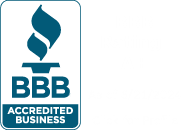Banking for nonprofits is important as the consistent flow of money is what allows the organization to carry out the mission. The proper handling of revenue and expenses allows to the organization to project its financial health and plan for the future.
Managing the finances is a crucial task that demands meticulous attention to detail and adherence to various regulations. Understanding and fulfilling banking responsibilities can significantly impact the organization’s ability to achieve its mission and impact the community.
Compliance with Legal and Regulatory Requirements
The Internal Revenue Service (IRS) sets forth guidelines for maintaining tax-exempt status for all nonprofit organizations. Proper record keeping and financial reporting is a key to meeting the compliance requirements of the IRS. In addition, nonprofit organizations must comply with state and federal banking laws, to include anti-money laundering and anti-fraud measures.
When banking is not handled properly, the organization may incur penalties. These penalties can range from paying a fine to doing jail time. The latter is an extreme case; however, it becomes the result when a person defrauds the organization.
To maintain its responsibility, organizations put policies and procedures in place to reduce the risk of being noncompliant with the state and federal regulations or being the victim of fraud.
Transparent Financial Management
As a public charity nonprofit, your financial information should be made available to the public as required by law. Financial information can be obtained through the organization website or the IRS 990 website. This public view of the organizations financial records provide transparency to its donors, grantors and other stakeholders, gaining their trust.
Nonprofits must accurately record all financial transactions, including donations, grants, and expenditures. Financials should be categorized according to its use. For example, an operating budget will include financial transactions that take place over time within the organization, whereas the program budget will be specific to revenue and expenses used for a particular project or program. To prevent fraud or errors, organizations are encouraged to have clear internal controls and regularly reconcile bank statements with financial records.
Another form of financial transparency is through an independent audit of the organization’s financial records. The audit gives a clear and concise view of the financial health of the organization as well as an overview of legal compliance. Audits are often requested by funders as way to ensure financial stability of the organization.
Effective Stewardship of Funds
Stewardship of funds is a core responsibility for any nonprofit. This involves prudent management of the organization’s resources to ensure that funds are used effectively and in alignment with the organization’s mission. Nonprofits should develop and follow a budget, monitor cash flow, and ensure that funds are allocated according to donor restrictions and organizational priorities. Utilizing banking services such as savings accounts, investment options, and financial planning tools can help maximize the impact of the organization’s funds.
Conclusion
Fulfilling banking responsibilities is essential for the financial health and sustainability of a 501(c)(3) nonprofit organization. By ensuring compliance with regulations, maintaining transparent financial management, and practicing effective stewardship of funds, nonprofits can build trust with stakeholders and enhance their ability to make a positive impact. Partnering with a bank that understands the unique needs of nonprofits can provide valuable support in meeting these responsibilities.
As consultants, BryteBridge Nonprofit Solutions is here to help you navigate this journey and unlock your nonprofit’s full potential. For more information, join BryteBridge Connect Membership for Live Bootcamps, Webinars and classes. Speak to a BryteBridge Consultant today by calling 877-857-9002.



